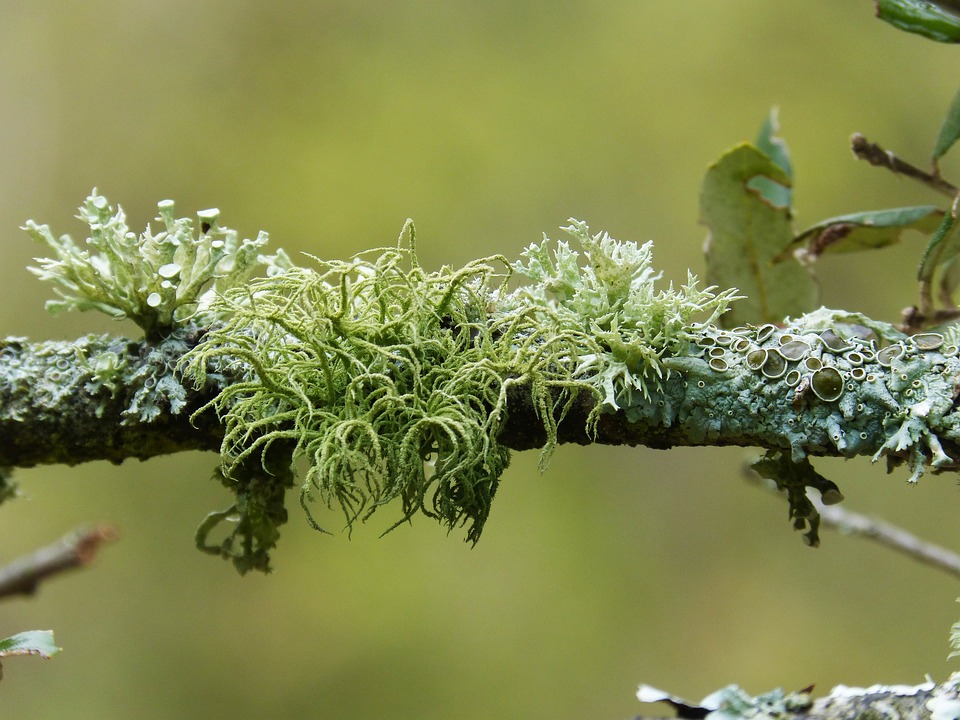Lichens of Woody Ornamentals and Trees
Searcy, Ark. –
Lichens are specialized organisms typically composed of an Ascomycete fungus combined
with a green or bluegreen alga. The alga receives food and protection from the fungus,
and the fungus receives some nutrition  from the alga. Lichens are distributed worldwide.
from the alga. Lichens are distributed worldwide.
They are most often seen growing on the bark of many living and dead trees. They can also occur on the surface of rocks, soil, fence posts and even on utility wires. Many lichens are quite susceptible to various air pollutants and can even serve as indicators of air pollution.
They are also food for animals and help break up the surface of rocks, thus initiating soil formation. Symptoms Lichens are commonly mistaken for plant diseases; however, they are not considered “true” parasites or pathogens of landscape shrubs and trees. In rare instances, if lichen growth becomes very dense on trees, small branches and twigs may be killed. This can be explained by a reduction in light absorption or gas exchange to the stems. Slow growing or declining plants are more likely to support the growth of lichens. These plants usually become stressed for reasons other than lichens.
Life Cycle
Lichens are classified into three groups as to their body form. The lichen body may be leaflike in organization, or foliose, crustlike, or crustose or shrublike, or fruticose . Lichens are dispersed by fragments of the lichen body being carried by wind, water or animals.
Management
Control in the home landscape is usually not necessary. If lichens become too unsightly or abundant, they can usually be brushed off stems or tree trunks with a stiff brush when the lichens are dry.
By Sherri Sanders
County Extension Agent - Agriculture
The Cooperative Extension Service
U of A System Division of Agriculture
Media Contact: Sherri Sanders
County Extension Agent - Agriculture
U of A Division of Agriculture
Cooperative Extension Service
2400 Old Searcy Landing Road Searcy AR 72143
(501) 268-5394
ssanders@uada.edu
The Arkansas Cooperative Extension Service is an equal opportunity institution. If
you require a reasonable accommodation to participate or need materials in another
format, please contact your County Extension office (or other appropriate office)
as soon as possible. Dial 711 for Arkansas Relay.
Pursuant to 7 CFR § 15.3, the University of Arkansas System Division of Agriculture
offers all its Extension and Research programs and services (including employment)
without regard to race, color, sex, national origin, religion, age, disability, marital
or veteran status, genetic information, sexual preference, pregnancy or any other
legally protected status, and is an equal opportunity institution.